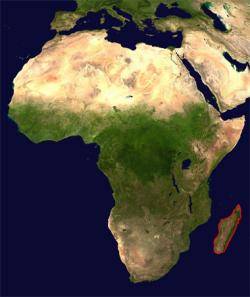 The Economist published a few a few days ago one of his Daily Charts, dedicated this time to visualizing the dimension of the growth of main cities in Africa, following data from the latest Habitat report State of African Cities 2010, Governance, Inequalities and Urban Land Market.
The Economist published a few a few days ago one of his Daily Charts, dedicated this time to visualizing the dimension of the growth of main cities in Africa, following data from the latest Habitat report State of African Cities 2010, Governance, Inequalities and Urban Land Market.
The Guardian also posted his own visualization selecting a smaller number of cities:
Like the BBC:
What do these maps and the UN report tell us? That cities like Abuja (Nigeria) or Ouagadougou (Burkina Faso) have practically doubled their population from 2005 to 2010 and that ten more will do so in the next ten years, a completely crazy growth rate. That Cairo, Lagos and Kinshasa will far exceed ten million urban inhabitants and that most African countries will have a high concentration of their population in one or several large cities. Not only that; The current trend places the largest growth of urban inhabitants on the continent outside of the traditionally most populated African cities, that is, that new geographical spaces in the different countries are confirmed as new attractors of the flight from the countryside to the city and add new cities to the urban map.
Beyond the data, what we find is a powerful migratory force practically comparable to what has been experienced in the last decade in Asia, mainly in China and India. Of course, the growth in these cities is much less showy. Urbanization China, for example, has had a wide echo derived from its growing economic power, and has been blessed with exhibitions and Olympics, while hiding their miseries and restrictions on freedom. Africa does not have its great urban developments for the global economy and design and architecture magazines, nor the miracle buildings that so entertain and offer a dream of modernity to this accelerated urbanization. For having, Chinese cities even have their doomsayers who announce the great cataclysm of the real estate mega-bubble.
The African continent, on the other hand, lives a silent urbanization, on the back of misery and on the back of a very weak institutional capacity to meet the needs of the population. African cities are the least equal in the world, with huge gaps between a small ruling class and affluent and a population with great difficulties in accessing basic urban services and employment or economic opportunities.
You may also be interested in:

